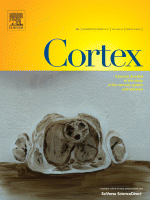TMS uses powerful but focused magnetic fields to interfere with brain function in localised areas. Electromagnetic pulses can be delivered singly, or repeated to produce longer lasting effects. TMS is commonly used in research to temporarily 'knock out' a brain region to investigate whether it is involved in a particular task.
Zoltan Dienes & Sam Hutton were interested to see how the dorsolateral prefrontal cortex (DLPFC) is involved in responding to hypnotic suggestions. DLPFC has been implicated in hypnotic responding in a number of theories. Some theories argue that hypnosis is associated with greater attentional focus, and that areas such as the DLPFC contribute to hypnotisability by aiding in that focus.
Dienes' own 'Cold Control' theory of hypnotic responding argues that the DLPFC is responsible for 'higher order thoughts' about our intentions & responses (higher order thoughts are literally 'thoughts about thoughts'), and that successful hypnotic responding is because of inaccurate higher order thoughts. For example, to successfully respond to a 'magnetic hands' suggestion the participant must have the intention of moving their hands together, but must be unaware of that intention. Thus, when their hands move together they feel as though the action happened involuntarily.
To test whether DLPFC is involved in hypnotic responding they tested 24 medium hypnotisable participants and had them respond to four hypnotic suggestions. During each suggestion TMS was delivered either to the left DLPFC, or to the vertex (a 'null' region where TMS is known to have no effect). Participants rated how strongly they expected to respond to each suggestion, and how they actually responded to each suggestion.
Delivering TMS to the left DLPFC rather than the vertex led to a increase in suggestbility of 0.3 points on a 5-point scale: a 6% difference. This result is in the ball-park of other attempts to modify suggestibility. Critically, the result seemed to be independent of any effects of expectancy.
While it awaits replication this result is interesting because it is one fo the few which focuses experimentally on brain systems in volved in hypnotic responding. It doesn't yet allow discrimination between cold-control and some other theories of hypnotic responding, but it is a fascinating start.
Download the full article from Dr Dienes' web page
What is hypnosis?
Definitions of hypnosis
Types of suggestion
FAQ
Scientific theories of hypnosis
History of hypnosis
Animal hypnosis
Key people in hypnosis
Demand characteristics
Scientific research
States of consciousness
Neuroscience
Modification of suggestibility
Attention and hypnosis
Pain research
Hypnosis as a research tool
Genes and hypnotizability
What is hypnotherapy?
Is it effective?
Finding a therapist
Depression
Irritable bowel syndrome
Pain
PTSD
Smoking
Surgery
Weight loss
Hypnosis research papers
Suggestibility scales
Scripts
Videos
Forum
Organisations
Journals
Book reviews
© 2007-2019 Dr Matthew Whalley

